Being just a beginner I'm really getting confused of pull-down resistors. Please have a look at the diagram below. Here there is a 10k pull down resistor is connected to ground and the pin 2 of arduino. Whats really the purpose?
Is it really to avoid shorting between the 5v and ground?? So if there is a LED (load) in the circuit when the button is pressed do we really need the pull-down resistor?
Also if the button is connected to an external source (5v battery) do we need a pull-down resistor in that case as well??
One more question, if I have 5 buttons to pin 1-5, So do we just need a common pull down resistor say 100k for the 5 buttons?
